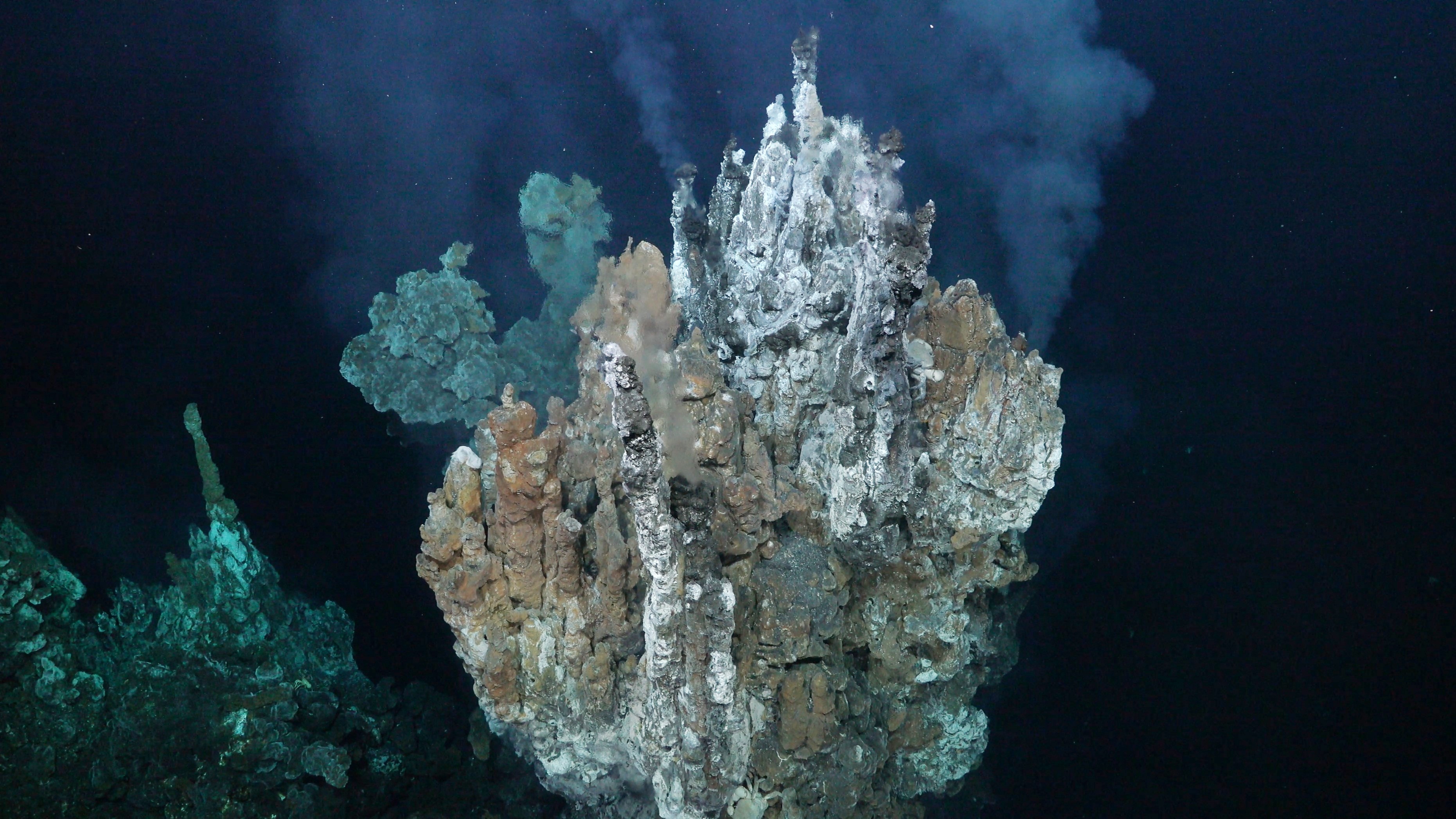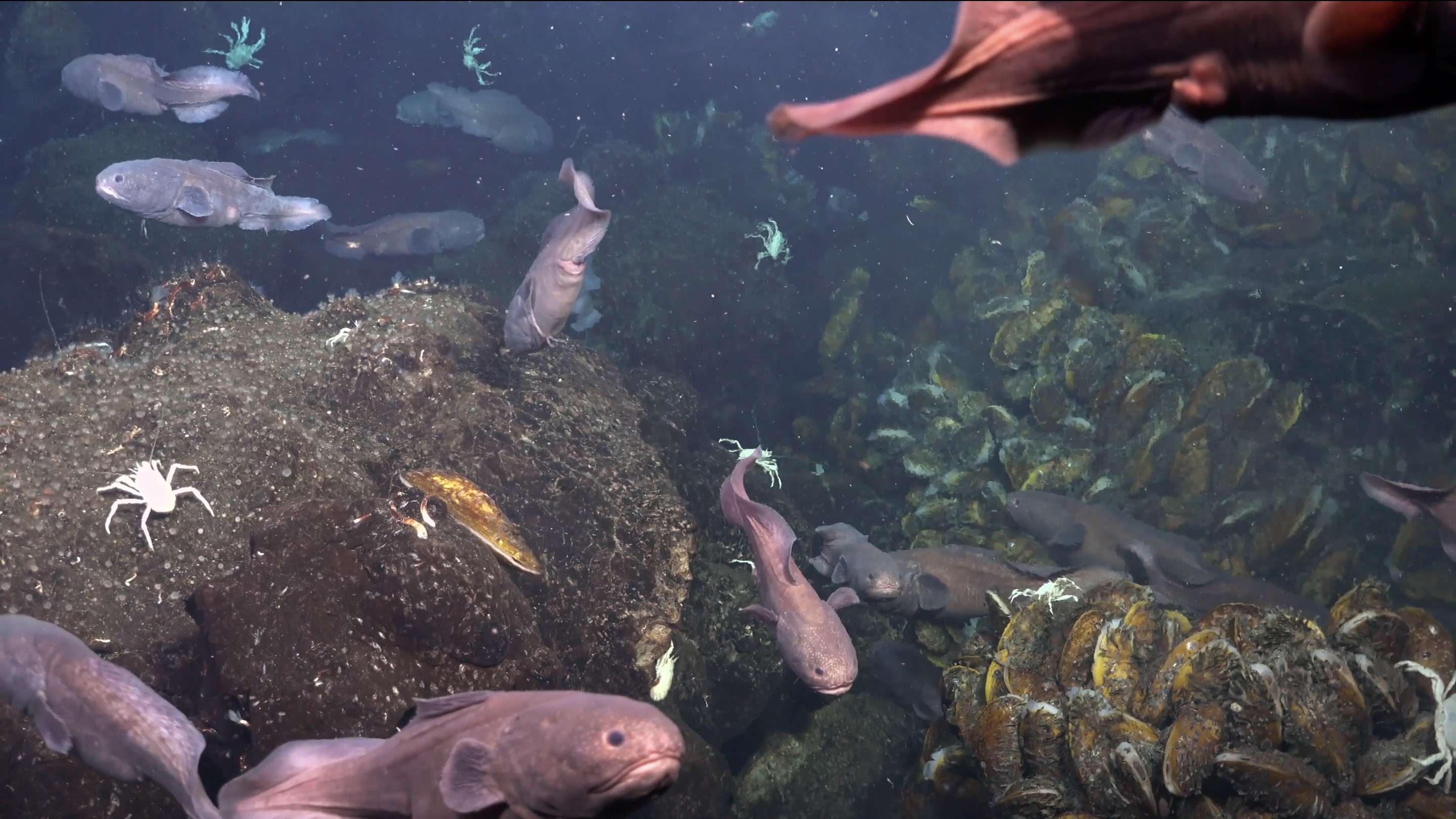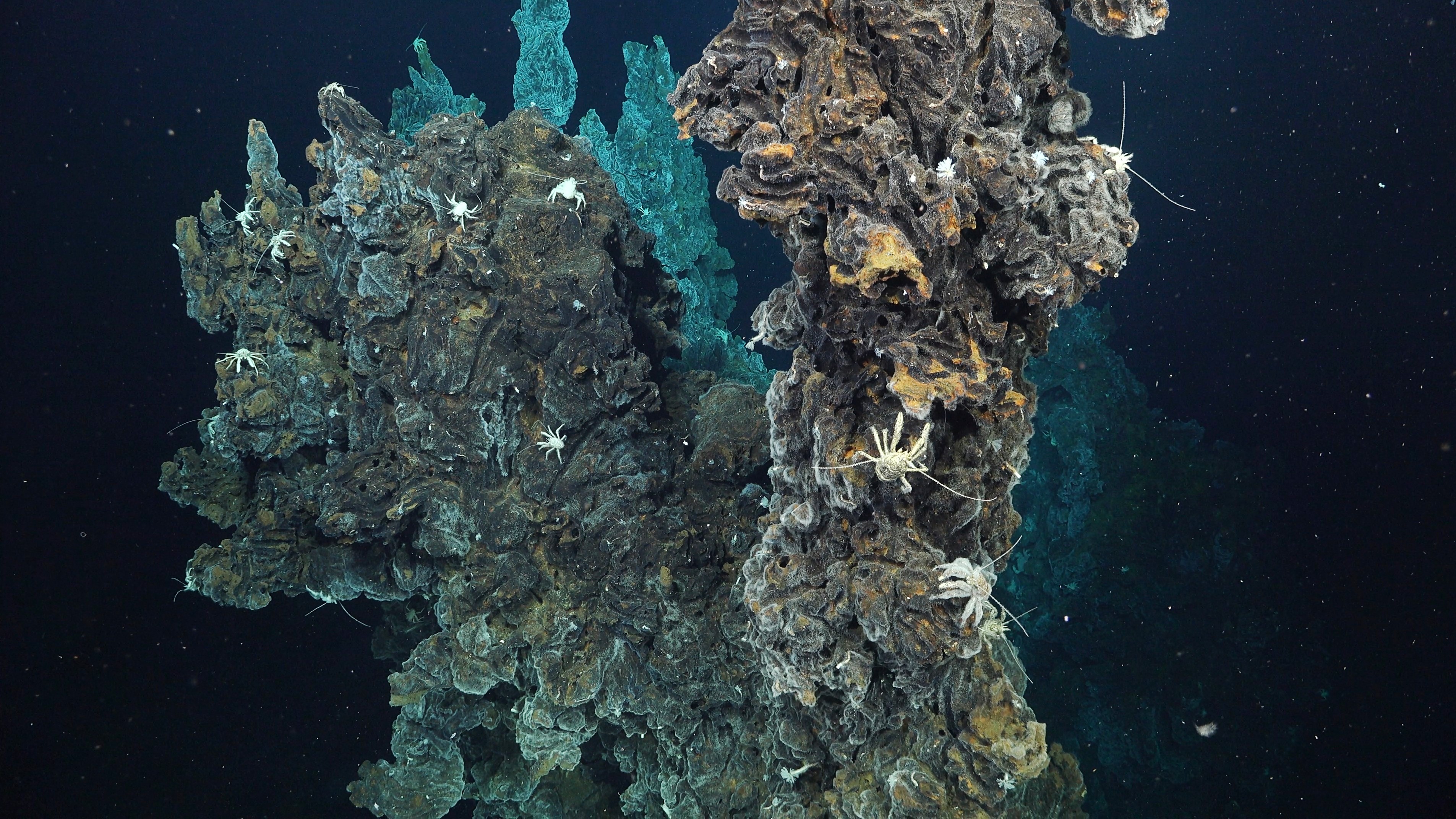
Scientists have discovered a giant field of hydrothermal vents towering as high over the seabed as a four story building and spewing plumes of hot liquid near the Galápagos Islands.
A research team was on a 30-day expedition off the coast of Ecuador when they detected clusters of ancient chimneys dotted along a 2,000-foot (600 m) stretch of seabed on the western edge of an underwater volcano called Los Huellos East, according to a statement that the Schmidt Ocean Institute shared with Live Science.
Using two high-resolution mapping instruments, the researchers charted the previously unknown hydrothermal vent field in astounding detail.
Related: Trail of crabs leads scientists to remarkable underwater discovery
The area hosted clusters of hydrothermal chimneys towering 33 to 50 feet (10 to 15 m) above the seabed and gushing hot liquid. The seabed around the chimneys was teeming with animals, including 15 species that scientists didn't know lived in this region. Among them, the team spotted a monoplacophoran — a small, limpet-like mollusk that has barely changed over the course of its evolution, according to the statement.

"These finely detailed maps created with state-of-the-art technology are exceptional for the area they cover and the seafloor complexity they reveal," Jyotika Virmani, executive director of the Schmidt Ocean Institute, said in the statement.
The team's research vessel, Falkor (too), also returned to a Pacific white skate (Bathyraja spinosissima) nursery on a hydrothermal vent field that had been discovered near the Galápagos in 2018. It's one of only two confirmed spots on Earth used by this species to incubate its eggs. The other nursery was discovered in July 2023 off the Pacific coast of Canada, and scientists estimate it was covered in up to a million giant skate eggs.
As if that weren't enough for one expedition, the team also revisited the first hydrothermal vent field ever discovered on Earth, which was put on the map in 1977. The vent field, known as Rose Garden and located along the Galápagos Rift, was thought to be inactive until 2015, when an expedition detected some venting activity, although researchers couldn't pinpoint the source.

Scientists aboard Falkor (too) have now mapped the Rose Garden vent site down to a resolution of 1.2 inches (3 centimeters). They also produced acoustic images, which translate sound into a visual representation, that will help them understand how its hydrothermal activity has changed over time.
"We returned to the site where hydrothermal venting was first discovered with technology that the original explorers never dreamed of," John Jamieson, a marine geologist at the Memorial University of Newfoundland who led the expedition, said in the statement.
"It is the ocean equivalent of returning to the moon after fifty years but with the latest 21st century technology," he added.







